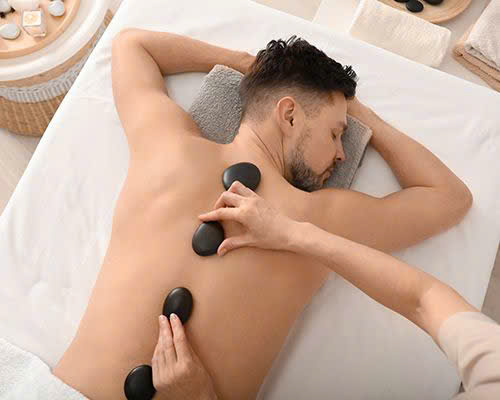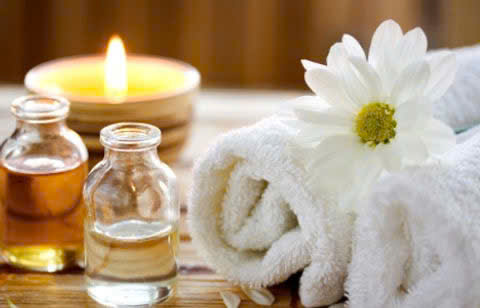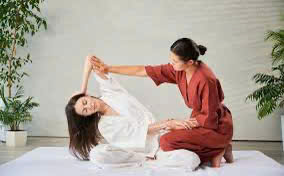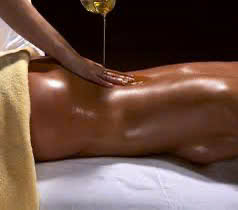Hot Stone, Thai & Aromatherapy – Massage Tailored for You
When it comes to massage, personalized approaches are increasingly popular as people seek effective ways to relax, heal, and rejuvenate. Among the various techniques available, Hot Stone, Thai, and Aromatherapy massages stand out for their unique benefits and immersive experiences. These specialized forms of massage therapy are designed to cater to individual needs, combining physical relief with mental harmony.
In this article, we explore each of these massage styles in detail, examining their origins, techniques, benefits, and what makes them stand out in the world of holistic wellness. Whether you’re a seasoned massage enthusiast or new to these therapies, understanding their essence can help you choose the perfect session tailored just for you.

The Therapeutic Power of Hot Stone Massage
Hot Stone massage is one of the most popular techniques in the realm of massage therapy, renowned for its ability to promote deep relaxation and alleviate muscular tension. The method involves the use of smooth, heated stones placed on key points of the body, combined with traditional massage strokes.
Hot Stone Massage and Its Healing Touch
The warmth of the stones penetrates deeply into muscle tissues, increasing blood flow and easing muscle stiffness. This deep thermal therapy facilitates the release of endorphins and serotonins, natural body chemicals that promote relaxation and feel-good sensations. This technique isn’t just about physical relief; it also targets mental stress, making it ideal for individuals dealing with anxiety or chronic stress.
Aside from relaxation, hot stone massage can improve flexibility and joint mobility. The heat relaxes tight muscles, allowing the therapist to work more effectively on knots and adhesions. Additionally, many patients experience relief from pain associated with conditions like arthritis, fibromyalgia, and muscle strains after regular therapy sessions. It’s important to note that the temperature of the stones is carefully controlled to ensure safety and maximum comfort.
Combining Hot Stones with Other Modalities
Many therapists integrate hot stones with other massage techniques—such as Swedish strokes or deep tissue work. This fusion amplifies the benefits, providing both superficial relaxation and deeper muscular release. The heat acts as a facilitator, allowing therapists to work more efficiently without causing discomfort or excessive pressure.
On a personal level, many clients report feeling an immersive sense of calm during and after a hot stone massage, often describing it as a meditative experience. The steady heat and rhythmic strokes melt away tension, making it an excellent choice for those seeking stress relief or relief from muscular pain.
| Benefits of Hot Stone Massage | Details |
|---|---|
| Deep Muscle Relaxation | Lasers in on tension points and eases muscle stiffness. |
| Improved Circulation | Heat helps expand blood vessels, promoting efficient blood flow. |
| Stress Reduction | The calming heat and soothing strokes create a meditative state. |
| Pain Relief | Effective for chronic conditions like arthritis, muscle strains, and fibromyalgia. |
| Flexibility & Range of Motion | Loosening muscles enhances joint mobility. |
Precautions and Considerations
Despite its many benefits, hot stone massage isn’t suitable for everyone. Individuals with certain health conditions—such as skin infections, open wounds, or circulatory problems—should consult a healthcare professional before trying this therapy. Pregnant women are also advised to seek advice for safe treatment options.
Therapists must carefully monitor the temperature and placement of the stones to prevent burns or discomfort. As a client, it’s essential to communicate openly about comfort levels throughout the session. When performed correctly, hot stone massage can be a transformative experience, uniquely tailored for individual needs.

Unlocking the Mystique of Thai Massage
Thai massage, rooted in centuries-old traditions, is an invigorating and holistic approach that combines acupressure, stretching, and yoga-inspired movements. Its focus on balancing energy pathways aligns with the philosophy that a harmonious body fosters overall well-being.
Origins and Philosophy of Thai Massage
Originating in Thailand over 2,500 years ago, Thai massage is deeply ingrained in traditional Thai medicine. Practitioners believe that the human body contains energy lines, known as ‘Sen’ lines, akin to meridians in Chinese medicine. Blockages or imbalances along these lines are thought to cause pain or illness. The purpose of Thai massage is to unblock these energy pathways, restoring the natural flow and promoting harmony within the body.
Unlike some Western styles that focus solely on muscle manipulation, Thai massage treats the body as a complete system, fostering both physical and energetic well-being. Its spiritual aspects also emphasize mindfulness, often accompanied by rhythmic breathing and meditative focus during the session.
Techniques and Practice of Thai Massage
Thai massage involves a combination of firm compression, gentle rocking, and assisted stretching. The practitioner usually applies palm pressure, thumbs, elbows, knees, and feet to specific points along the energy lines. The stretching techniques are akin to assisted yoga postures, which can improve flexibility and relieve tension.
Because it incorporates movement and active engagement, Thai massage often feels like a guided yoga session. It aims to increase energy flow and elastic flexibility, making it especially beneficial for individuals with stiff joints or chronic muscle tightness. The process can be quite invigorating, leaving clients feeling energized yet relaxed.
Benefits and Personal Insights
Many clients report profound improvements in posture, flexibility, and energy levels after Thai massage. Its holistic approach addresses underlying causes of discomfort rather than merely alleviating symptoms temporarily. This makes it suitable not only for physical ailments but also for mental clarity and emotional balance.
Personally, Thai massage presents an engaging experience—it’s dynamic, involving both practitioner and client actively participating in the healing process. It restores harmony by unblocking energy pathways, leading to a sense of inner peace and physical renewal. For those seeking active wellness and spiritual mindfulness, Thai massage offers an enriching journey.
| Aspect | Description |
|---|---|
| Technique | Combination of acupressure, assisted stretching, and rhythmic movements |
| Energy Focus | Unblocking ‘Sen’ lines to restore energy flow |
| Experience | Active engagement, dynamic, akin to assisted yoga |
| Benefits | Flexibility, posture enhancement, stress relief, mental clarity |
| Suitable For | Individuals with stiff joints, chronic tension, or those seeking energetic balance |
Integrating Thai Massage into Wellness Routines
Incorporating Thai massage into a regular wellness routine can significantly enhance overall health. It promotes not only physical flexibility but also mental resilience. For best results, sessions are often combined with other therapies like meditation or yoga. Its energetic focus helps to balance the body’s vitality and support the immune system.
Discussing specific health concerns with your therapist before a Thai massage ensures a tailored approach. For example, certain stretching sequences can be modified for seniors or those with limited mobility. When done correctly, Thai massage becomes a powerful tool for holistic health, harmonizing body and mind.

Aromatherapy Massage: The Science of Scent and Touch
Aromatherapy massage combines the healing power of essential oils with the efficacy of massage techniques. This approach nourishes the skin, stimulates the senses, and promotes emotional and physical healing through carefully selected fragrances.
The Art and Science of Aromatherapy
Aromatherapy is an ancient healing art that harnesses the natural properties of plant extracts, or essential oils, to improve health and well-being. In massage therapy, these oils are diluted and applied through gentle strokes, enhancing the sensory experience. The scent molecules penetrate the skin and evoke emotional responses, often calming anxieties or uplifting spirits.
Each essential oil has unique therapeutic properties—lavender for relaxation, eucalyptus for respiratory relief, peppermint for energy, and chamomile for calming. Combining specific oils with massage techniques can optimize physical benefits while also addressing emotional states.
How Aromatherapy Enhances the Massage Experience
The synergy between touch and scent creates an immersive relaxation effect that can’t be achieved through massage alone. Aromatherapy stimulates the limbic system—the brain’s emotional center—affecting mood, memory, and stress levels. This dual approach makes each session deeply personalized and impactful.
Therapists select oils based on individual client needs, whether to reduce muscle tension, improve sleep, or elevate mood. The aroma acts as a subconscious cue for relaxation, often extending the calming effects long after the session ends. Many clients find aromatherapy massage to be a mood booster and a powerful stress management tool.
Popular Essential Oils and Their Benefits
| Oil | Benefits | Uses in Massage |
|---|---|---|
| Lavender | Calmness, stress relief | Used for relaxation and anxiety reduction |
| Eucalyptus | Respiratory health, clarity | Promotes clear breathing, invigorates senses |
| Peppermint | Energy, headache relief | Reduces tension, invigorates mind |
| Chamomile | Calm, anti-inflammatory | Soothing for sensitive or inflamed skin |
| Ylang-Ylang | Mood enhancement | Elevates mood and reduces anxiety |
Creating a Personalized Aromatherapy Massage
One of the beauties of this massage style is its versatility. Therapists often craft custom blends tailored to individual needs, preferences, or health issues. For example, a client suffering from insomnia might receive a lavender and chamomile blend, while someone looking for an energizing boost could opt for eucalyptus and peppermint.
This personalized approach transforms massage from a generic experience into a deeply therapeutic encounter. The right combination of scent and technique can unlock emotional barriers, enhance physical healing, and foster a sense of harmony and well-being.
Conclusion
In exploring Hot Stone, Thai, and Aromatherapy massages, we see how each modality offers unique pathways to health and harmony, tailored to individual preferences and needs. Hot Stone massage emphasizes thermal therapy for deep muscular relaxation, making it ideal for stress relief and pain management. Thai massage integrates energetic balancing through active stretching and acupressure, fostering flexibility and spiritual rejuvenation. Aromatherapy combines the psychological benefits of scent with therapeutic touch, creating a deeply personal healing experience.
All these techniques exemplify how massage can be a personalized journey—fusing physical relief with emotional and energetic harmony. When selecting a massage style, consider your specific goals, whether it’s relaxation, flexibility, energy, or emotional balance. Ultimately, these tailored therapies demonstrate that massage is not just about physical touch but about nurturing the whole person for optimal well-being.
In conclusion, whether you’re seeking soothing thermal therapy, energetic realignment, or scent-infused relaxation, these massage styles show how personalized care can wonderfully transform your health journey.

Understanding the Fundamental Principles of Thai Massage
Thai massage is an ancient practice that incorporates a variety of therapeutic techniques aimed at aligning the body’s energy and relieving physical tension. This unique form of massage seeks – through stretching, acupressure, and rhythmic movements – to balance the energies within the body, leading to a heightened sense of well-being. Immersing oneself in the traditions and philosophies behind this practice can greatly enhance one’s appreciation and understanding of its profound effects.
The Historical Roots of Thai Massage
Thai massage, or Nuad Bo-Rarn, has its origins in India and has been shaped by the cultures of both India and Thailand over centuries. The rich tapestry of its history is steeped in spiritual beliefs and practices, drawing influences from Buddhism and traditional Chinese medicine.
The foundations of Thai can be traced back to the teachings of Jivaka Kumar Bhacca, a physician to the Buddha. His insights formed the basis of the practice, intertwining body mechanics with spiritual guidance. Over the years, the techniques evolved into a holistic healing system incorporating yoga-like stretches and pressure technique, designed to promote the flow of energy in the body.
The unique aspect of Thai lies in its focus on the body’s energy lines, known as “Sen.” These lines are believed to carry vital energy throughout the body. Blockages along these pathways can lead to physical and emotional discomfort, making the unblocking of Sen lines a central aim of the practice. Understanding this historical framework allows practitioners and clients alike to appreciate the depth of Thai approach to health and wellness.
Principles Behind the Techniques
At its core, Thai massage functions on several fundamental principles that intertwine physical manipulation with energetic awareness. Deeply seated in the philosophy is the belief that a healthy body is one where energy flows freely without obstruction.
One key principle involves the connection between physical tension and emotional distress. Through rhythmic compressions and stretching, Thai not only releases muscle tightness but also addresses emotional stress, promoting a holistic healing experience that is both physical and spiritual. Clients often emerge from sessions with greater clarity and calmness, as the therapeutic movements help to liberate emotional blockages.
Another important principle relates to breathwork—the concept of mindful breathing is seamlessly integrated into the process. Practitioners guide clients in synchronizing their breaths with movements, enhancing relaxation and deepening the effects of the . This connection between breath and movement not only empowers individuals to engage more fully in the experience but also teaches them to tune into their bodies and emotions.
The Therapeutic Effect of Thai
The therapeutic benefits of Thai extend far beyond simple relaxation. Practitioners often report profound improvements in various aspects of their physical and emotional health after experiencing this style, fundamentally altering their approach to well-being.
Physically, individuals often notice lasting enhancements to their flexibility and posture as the dynamic stretches undertaken during the impact muscle length and joint mobility. This emphasis on movement sets Thai apart from many other modalities, promoting a sense of physical revitalization that can significantly improve overall function. For those with chronic pain or muscular tension, the targeted acupressure techniques can effectively alleviate discomfort, leading to improved quality of life.
Emotionally and mentally, many clients report heightened clarity and emotional equilibrium following Thai sessions. This correlates with the practice’s holistic approach, which works at the intersection between physical relaxation and mental awareness. By unblocking energy pathways, Thai fosters a harmonious connection between the mind and body, often resulting in a heightened sense of well-being. Clients return not just for physical relief but for the rejuvenation of the spirit — a testament to the integrative philosophy of this time-honored practice.
The Benefits and Experience of Aromatherapy
Aromatherapy fuses the benefits of massage therapy with essential oils, creating a unique healing experience that nourishes both body and spirit. This modality inspires a sensory journey, allowing individuals to progress through a relaxing landscape of scent and touch while unlocking profound emotional and physical healing pathways.
The Therapeutic Properties of Essential Oils
Essential oils are the cornerstone of aromatherapy ; their therapeutic properties are unparalleled in supporting holistic health. Each oil offers diverse benefits ranging from calming the mind to invigorating the body, making them integral to the experience.
For instance, lavender essential oil is renowned for its sedative properties, often used to alleviate anxiety and improve sleep. Its calming scent can help clients release their daily stressors even before the actual begins. Eucalyptus, on the other hand, serves to clear respiratory pathways and induce a sense of invigorating renewal, making it ideal for those feeling fatigued or mentally drained.
The complexity of essential oil chemistry is what contributes to their effectiveness. The natural compounds within these oils interact with the body’s olfactory system to evoke powerful emotional responses and can even trigger memories. This conceptualization redefines how we perceive therapeutic techniques, recognizing that emotional healing is just as important as physical release.
The Sensory Experience of Aromatherapy
Engaging multiple senses is a hallmark of aromatherapy, and its underlying principle is to create an immersive experience that transcends traditional massage. Scents play a fundamental role in shaping emotional states, often helping individuals access and process feelings that may have previously felt suppressed.
During an aromatherapy session, the gentle application of essential oils, along with the rhythmic strokes of the , creates a multi-dimensional experience. Clients may find themselves transported to tranquil settings, reminiscent of moments that filled them with comfort and joy. This sensory integration can amplify the calming effects, prolonging feelings of relaxation long after the session concludes.
Furthermore, the dynamic relationship between scent and emotion enables therapists to tailor treatment to individual client needs. The expertise in selecting specific oils based on the desired outcomes signifies the personalized touch of aromatherapy massage, turning a routine procedure into a deeply healing ritual. Clients may enter with stress or tension, but they often leave equipped with a sense of rejuvenation and a renewed outlook.
Personalizing Aromatherapy Sessions
Personalization is what truly elevates aromatherapy massage from a basic treatment into a transformative experience. Understanding a client’s unique needs and crafting a tailored approach fosters a more profound connection that enhances effectiveness.
During the initial consultation, practitioners work to identify the client’s specific wellness goals, allowing for a comprehensive understanding of which essential oils to incorporate. A client experiencing chronic pain may benefit from peppermint oil, recognized for its analgesic properties, while someone seeking emotional balance might be better served with a blend of ylang-ylang and chamomile.
Moreover, the feedback loop between the client and therapist is essential for optimizing results. Clients are encouraged to voice their preferences, creating an atmosphere of collaboration. This open dialogue allows therapists to adjust techniques and oils mid-session, ensuring processes remain aligned with the individual’s evolving state. This partnership cultivates trust and bolsters emotional healing, making aromatherapy a true representation of holistic care.https://www.tiktok.com/@jobe.spa.massage?_t=ZS-8uucYtHwssr&_r=1
Conclusion
Through the exploration of Thai and Aromatherapy , one can discern an intricate tapestry of practices rich in history, philosophy, and therapeutic benefit. Thai , rooted deeply in tradition, offers a unique blend of physical engagement and energy realignment, promoting holistic wellness through its dynamic approach. Aromatherapy enhances this experience by embedding the powerful healing properties of essential oils, personalizing the emotional and physical healing journey. Together, these modalities exemplify how body and mind can be uniquely nurtured through tailored approaches, emphasizing that wellness transcends beyond mere physical aspects, integrating emotional balance and spiritual rejuvenation for a truly enriching life experience.https://jobedubaispa.com/massage-therapy-5/
